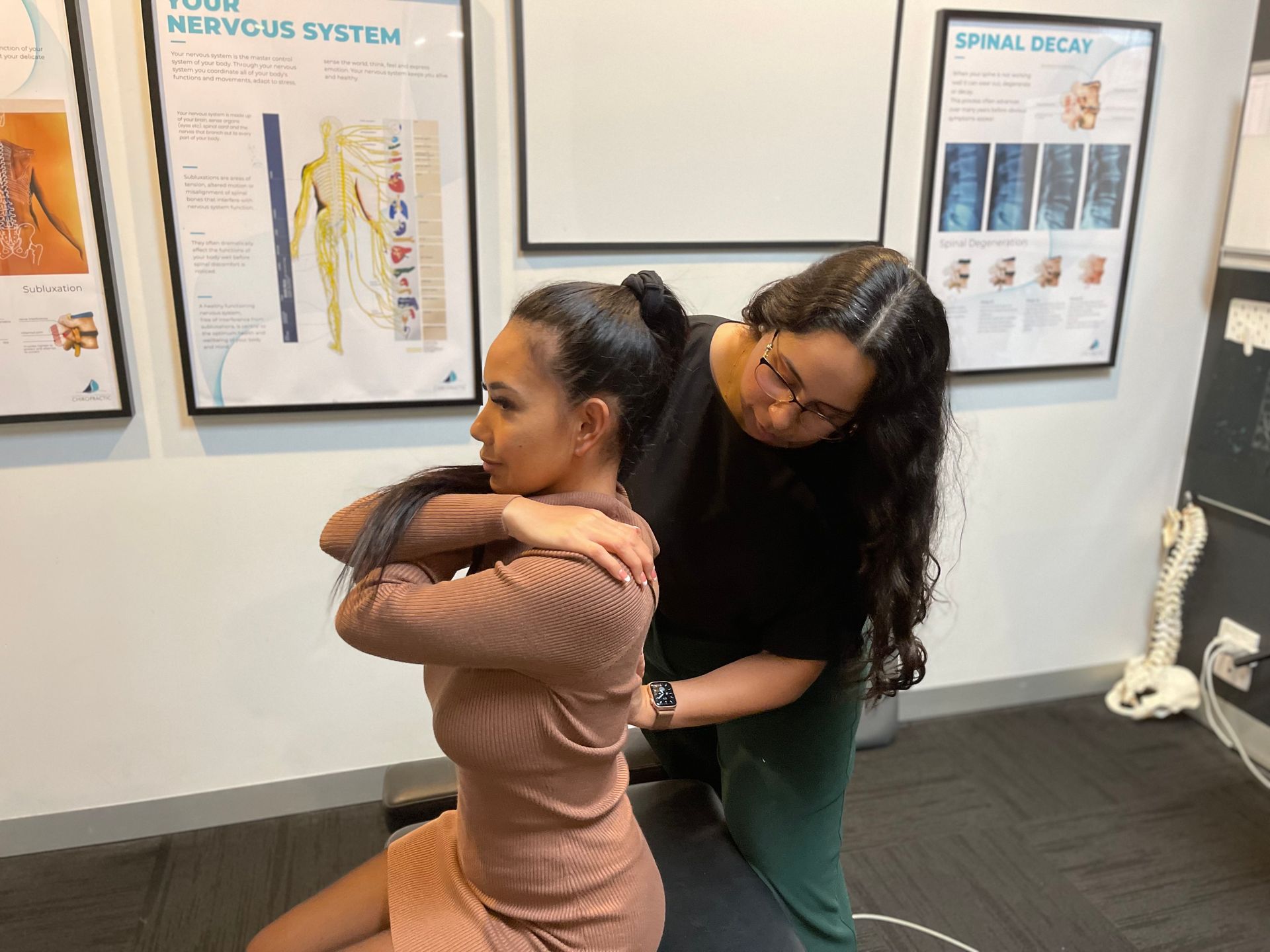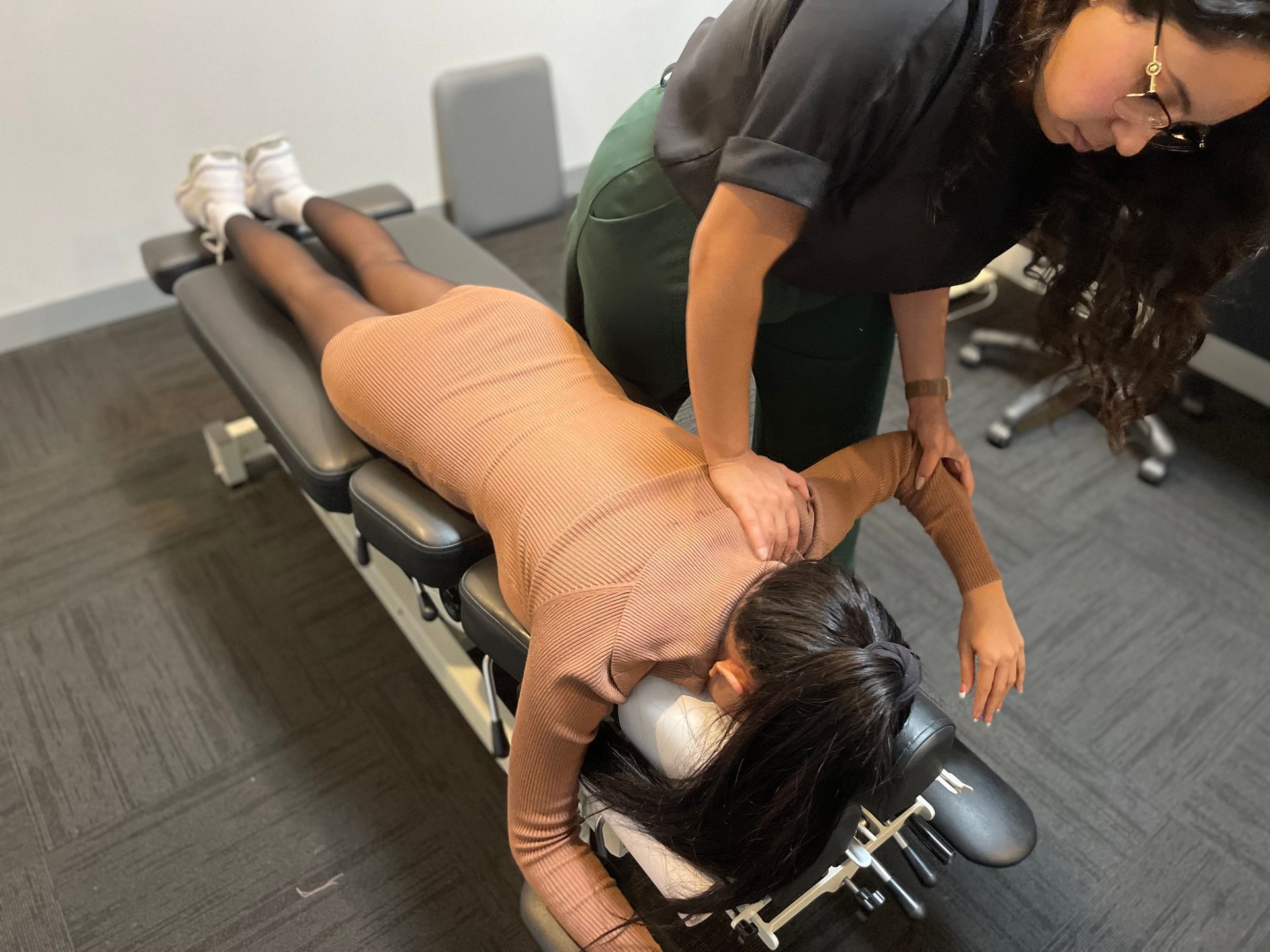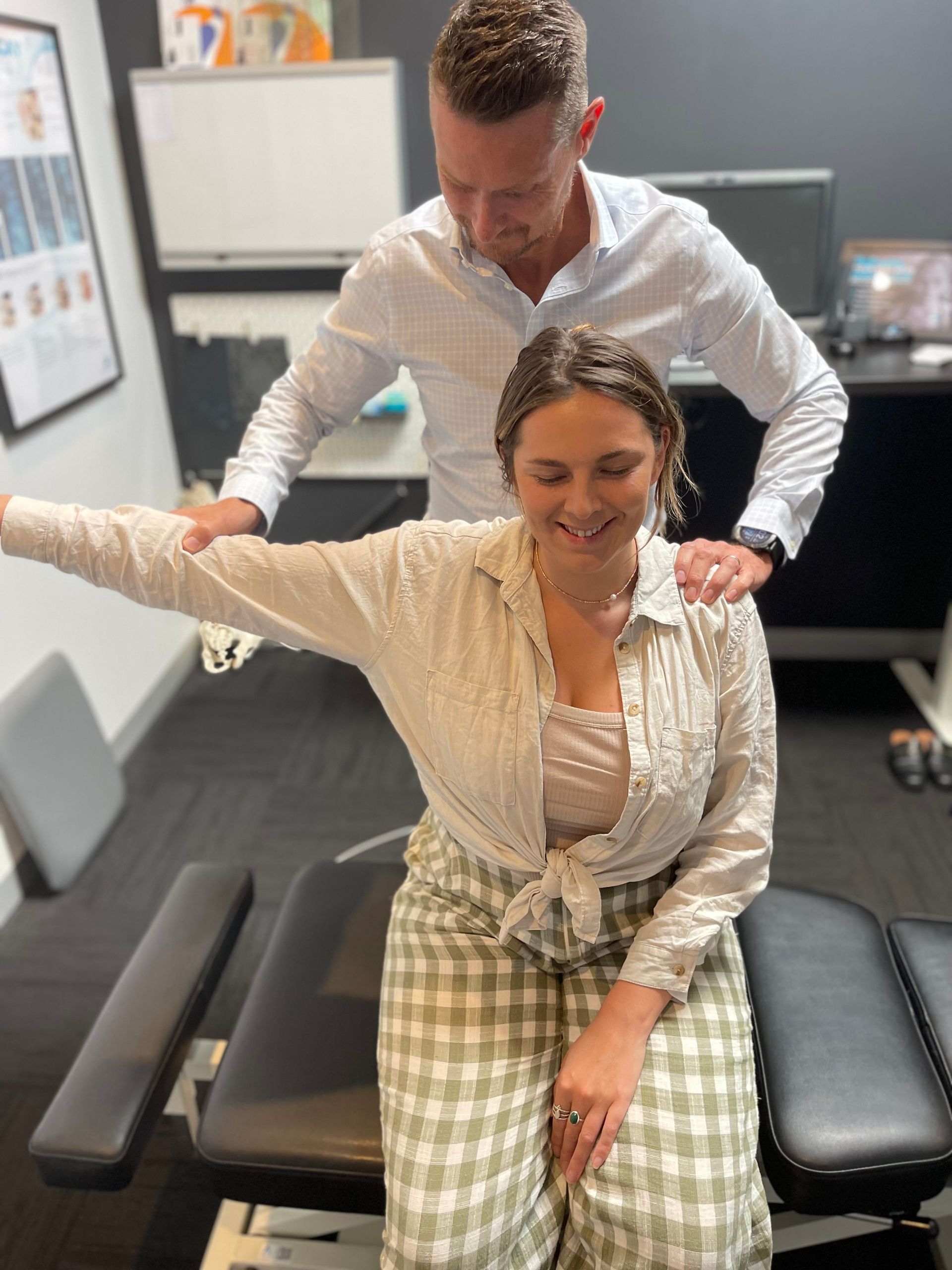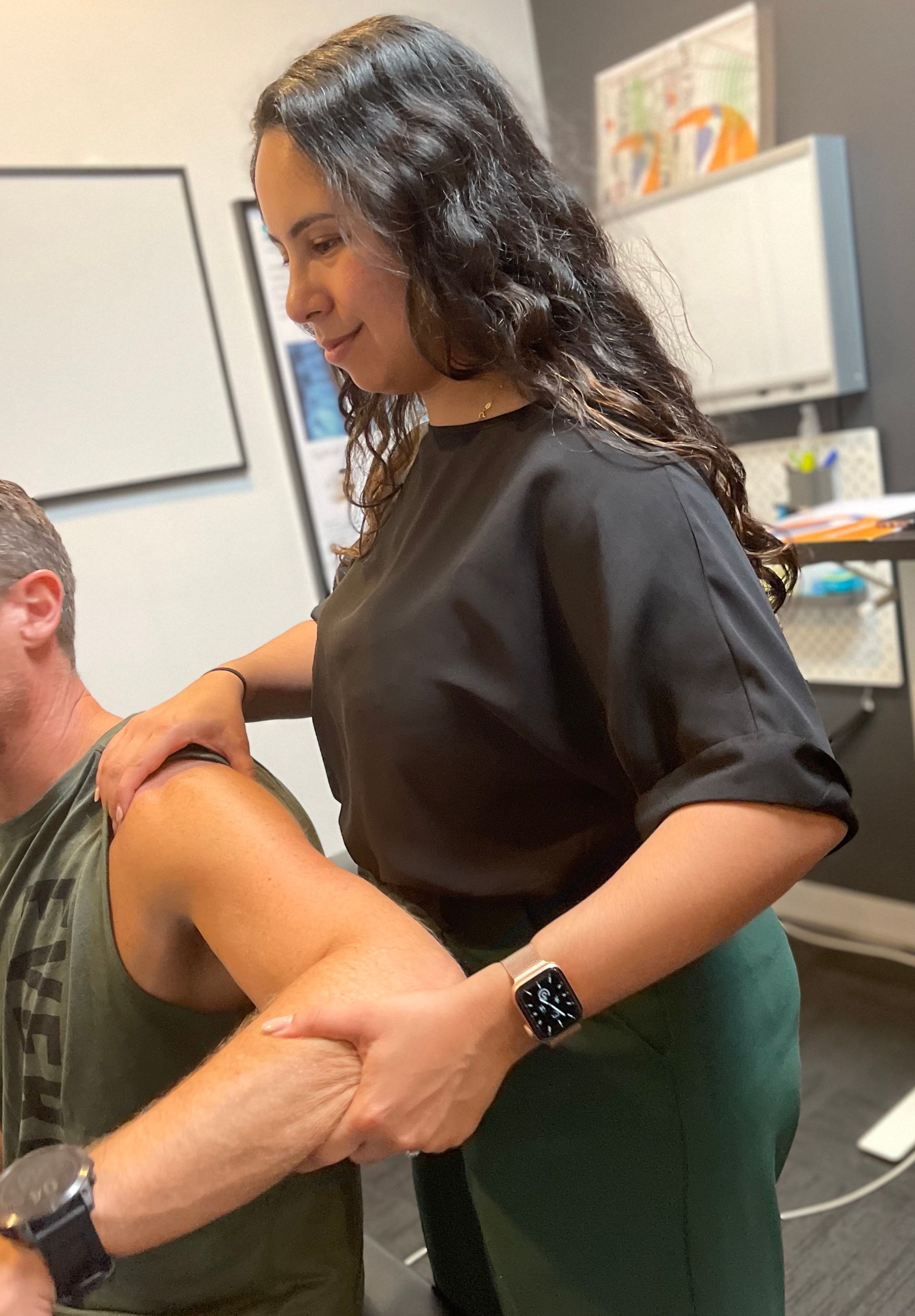Is Physio Or Chiro Better For Bulging Disc
Finding the best bulging disc treatment can be overwhelming. Is physio or chiro better for bulging disc?
As someone who has suffered from a bulging disc, I know how important it is to find a novel solution that works. We will compare the benefits of physiotherapy and chiropractic care for bulging discs to help you make an informed decision that matches your desire for innovation and effective solutions.
Physiotherapy and chiropractic care treat bulging discs differently. Physiotherapists use exercises, stretches, and manual therapy to strengthen spine muscles and improve flexibility.
However, chiropractors realign vertebrae to relieve disc pressure. Both treatments aim to reduce pain, improve mobility, and heal. We can better assess which method will best meet our needs by understanding their methods.
Physio Vs. Chiro
Physiotherapy and chiropractic treat bulging discs differently. Physiotherapists use exercise and movement to relieve bulging disc pain. They strengthen surrounding muscles, improve flexibility, and increase mobility.
In contrast, chiropractors use spinal adjustments to realign vertebrae and relieve disc pressure.
Both physiotherapy and chiropractic care can treat bulging discs. The herniated disc can weaken or strain your back, so physiotherapists can prescribe targeted exercises. They may also use ultrasound or manual therapy to reduce inflammation and speed healing.
Using adjustments, chiropractors manipulate the spine. These adjustments realign the vertebrae to relieve the bulging disc. Chiropractic treatments help relieve herniated disc pain.
Physiotherapy and chiropractic care can treat bulging discs, depending on individual needs. Physiotherapy exercises may help strengthen back muscles over time, while chiropractic adjustments may provide immediate relief.
Understanding the differences between physiotherapy and chiro therapy for bulging discs is crucial when choosing one. Chiropractors adjust spines, while physiotherapists exercise. Understanding your preferences and consulting with healthcare professionals can help you choose the best treatment.
Types Of Treatment

Find relief from spinal pain by exploring treatment options. Chiropractic and physiotherapy treat bulging discs differently.
Physical therapists use exercises, manual therapy, and other non-invasive methods to reduce pain and improve mobility. They mostly use spinal adjustments and manipulations to realign and relieve disc pressure.
Bulging disc physiotherapy often targets the affected area and surrounding muscles and structures. Physiotherapists target exercises and stretches to strengthen spine-supporting muscles and improve flexibility. They may also use ultrasound or electrical stimulation to reduce inflammation and promote healing.
This holistic approach relieves pain and prevents future injuries. Chiropractic treatment for bulging discs involves manual spine adjustments. Chiropractors believe spine misalignments can press on intervertebral discs, causing bulges or herniations. Chiropractors apply controlled force and specific techniques to realign the spine and relieve disc pressure.
Although chiropractic adjustments may provide immediate relief, this approach may not be right for everyone. To understand your bulging disc treatment options, consult physiotherapists and chiropractors.
Physiotherapy treats immediate symptoms and promotes long-term recovery through exercise. In contrast, chiropractic treatment uses targeted spinal adjustments to relieve some patients quickly.
Physiotherapists
For your bulging disc, a physiotherapist will create a personalized exercise program to strengthen spine-supporting muscles and improve mobility.
Physiotherapists are experts in treating musculoskeletal conditions like bulging discs. They treat pain and promote healing with manual therapy, stretching, and therapeutic exercises.
Seeing a physiotherapist for your bulging disc is beneficial because they can create individualized treatment plans. They'll evaluate your condition and create a customized program. This customized approach ensures the most effective treatment for your body.
Physiotherapists also manage and prevent future injuries. They relieve pain immediately and teach you how to keep your spine healthy and prevent further damage. Physiotherapists can reduce disc problems by correcting muscle imbalances.
Chiropractors

If you want an alternative spinal treatment, visit a chiropractor who can customize care. Chiropractors diagnose and treat musculoskeletal disorders like bulging and herniated discs.
Chiropractic care may help manage your condition for four reasons:
- Spinal adjustments: Chiropractors use manual manipulation techniques to realign the spine and reduce pressure on the affected disc. These adjustments can help relieve pain, improve mobility, and promote healing in the surrounding tissues.
- Non-invasive approach: Unlike surgery or medication, chiropractic care offers a non-invasive option for treating bulging discs. Chiropractors aim to address the root cause of the problem rather than just masking the symptoms, which can lead to long-term relief and improved overall health.
- Holistic perspective: Chiropractors take a holistic approach to healthcare, considering not only the physical aspects but also how lifestyle factors may be contributing to your condition. They may provide advice on exercise, nutrition, posture correction, and stress management strategies that can complement their treatments.
- Collaboration with other professionals: Chiropractors often work closely with physiotherapists and osteopaths to ensure comprehensive care for their patients. This collaborative approach allows for a multidisciplinary perspective that maximizes results and provides you with access to various treatment modalities.
Disc Treatment
Treating disc issues like herniation or degeneration is an effective way to manage spinal conditions. In disc treatment, physiotherapists and chiropractors can help.
A physiotherapist strengthens the muscles around the bulging disc through exercises, stretches, and other methods. Relief of pressure and healing are the goals of this method. Chiropractors use spinal manipulation to realign the spine and relieve bulging disc pain.
Physiotherapy treats bulging discs holistically to provide pain relief and long-term rehabilitation. A skilled physiotherapist will assess your condition and create a customized treatment plan that may include manual, electrical, or ultrasound therapy. These methods reduce inflammation, increase blood flow, and improve mobility. By improving muscle strength and flexibility, physiotherapy can relieve bulging disc symptoms.
Chiropractors treat bulging discs with spinal manipulation. They use gentle spine adjustments to realign and relieve pressure. Light spine adjustments can immediately relieve nerve compression pain from a bulging disc. Chiropractic care may not correct muscular imbalances or provide long-term rehabilitation, like physiotherapy.
Physiotherapy and chiropractic care may help bulging disc patients. Physical therapy strengthens muscles around the affected area and uses various therapeutic methods to relieve pain and rehab. Chiropractic care relies on spinal manipulation aiming to provide immediate symptom relief but may not offer as many rehabilitation options as physiotherapy. Knowing these differences can help you choose the best treatment for your needs.
Comparing Treatment Options

Is physio or chiro better for bulging disc? Comparing spinal condition treatment options can help determine the best way to manage and relieve pain. Physiotherapy and chiropractic care are common bulging disc treatments. You should weigh your options before choosing one of these methods because each has pros and cons.
Focus distinguishes physiotherapy from chiropractic care. Physiotherapy uses exercises, stretches, and manual therapy to improve strength, flexibility, and mobility. However, chiropractic care emphasizes spinal adjustments to correct misalignments and restore function.
Physiotherapy may be better for improving fitness, while chiropractic care may be better for pain relief.
Physical therapy and chiropractic care have helped bulging disc patients. Physiotherapists collaborate with patients to create customized exercise programs that target condition-specific areas. However, chiropractors manipulate the spine and relieve disc pressure using hands-on techniques. The choice between these two treatments depends on personal preferences and needs.
Benefits Of Physiotherapy
For your spinal pain and overall health, physiotherapy can relieve symptoms and improve your condition without surgery or medication.
Physiotherapy treats bulging discs holistically by addressing the cause. Physiotherapists use manual therapy, exercises, and education to relieve pain, restore mobility, and strengthen the affected area. Physiotherapy helps you regain control and live pain-free by treating symptoms and underlying issues.
Natural healing is a major benefit of physiotherapy. Physiotherapy boosts your body's healing processes, unlike medications or surgeries. Physiotherapists use targeted exercises and specialized techniques like traction or spinal manipulation to increase blood flow, reduce inflammation, and repair tissue. This natural treatment relieves pain and promotes a long-term recovery.
Personalized care is another benefit of bulging disc physiotherapy. Each condition requires individualized treatment plans. Physiotherapists design rehabilitation programs based on age, lifestyle, medical history, and personal goals. This personalized approach guarantees optimal recovery care.
Besides relieving pain and promoting healing, physiotherapy prevents bulging disc injuries. Physiotherapists can teach you proper body mechanics and ergonomics to reduce spine stress by identifying faulty movement patterns or postural imbalances that cause disc herniation. They will teach you core strength, stability, flexibility, and posture exercises. Prevention is key to avoiding future episodes and maintaining a healthy spine.
Physiotherapy has many benefits for bulging discs. From natural healing to personalized care and preventive measures, physiotherapy aims to relieve your pain and improve your health.
Benefits Of Chiropractic Care

Discover how chiropractic care can treat spinal conditions naturally and holistically, improving your health.
Chiropractic care relieves and heals spinal issues like bulging discs. Chiropractic care has four main benefits for low back pain and other spinal issues:
- Pain Relief: Chiropractors use manual manipulation techniques to realign the spine, reducing pressure on the affected discs and relieving pain. This drug-free approach focuses on addressing the root cause of the problem rather than just masking the symptoms. By restoring proper alignment, chiropractic adjustments can significantly reduce discomfort associated with bulging discs.
- Improved Functionality: Chiropractic care not only aims to alleviate pain but also enhances overall functionality. Through targeted adjustments, chiropractors help restore mobility and range of motion in the spine, allowing individuals to perform daily activities with greater ease. By improving spinal function, chiropractic care can support better posture and prevent further injury.
- Non-Invasive Approach: Unlike surgery or medication, which may come with potential risks and side effects, chiropractic care offers a non-invasive alternative for managing bulging discs. Chiropractors use gentle techniques that don't require any incisions or pharmaceutical interventions. This makes it a safer option for individuals seeking conservative treatment methods.
- Holistic Wellness Benefits: Chiropractic care takes a holistic approach to wellness by considering the body as a whole system rather than focusing solely on the affected area. In addition to addressing specific spinal problems like bulging discs, chiropractors also aim to improve overall health and well-being through lifestyle recommendations such as exercise routines, nutritional guidance, and stress management techniques.
Chiropractic care benefits those with bulging discs or other spinal conditions through its focus on natural healing and personalized treatments. Choosing between physiotherapy and chiropractic care requires consideration of several factors.
Choosing The Right Treatment
It's important to choose a bulging disc treatment that prioritizes your health and provides long-term relief. There are two main options: physiotherapy and chiropractic. Both can treat a bulging disc, but it's important to choose the right one for you.
Physiotherapy (physical therapy) restores movement and function through exercises and manual techniques. The goal is to strengthen spine-supporting muscles, increase flexibility, and reduce pain.
Physiotherapists treat bulging disc symptoms with ultrasound, heat, and electrical stimulation. They also teach posture and body mechanics to prevent injury.
However, chiropractic care focuses on spinal adjustments or manipulations to correct misalignments. These misalignments can interfere with the nervous system, causing health issues like bulging disc back pain, according to chiropractors.
Chiropractors use gentle spine adjustments to realign and relieve nerve root pressure. Choosing between physiotherapy and chiropractic care depends on your needs. Some patients benefit from physiotherapy exercises that target muscles around the bulging disc. Some prefer chiropractic adjustments to realign the spine and relieve pain immediately.
Physiotherapy and chiropractic care can help with bulging discs. Before choosing, consult this field's healthcare experts. They will thoroughly assess your condition and recommend a personalized treatment plan. Understand the risks of any treatment option to make an informed decision that prioritizes your well-being.
Potential Risks

To make an informed health decision, one must know the risks of these treatments. Chiropractic and physiotherapy can treat bulging discs, but there are risks.
Spinal adjustments may cause injury during chiropractic care. Aggressive manipulation may cause herniated discs or nerve damage in rare cases.
However, physiotherapy improves musculoskeletal function through exercises and modalities. Despite being safe, there are risks. Improper or excessive exercise can worsen bulging disc symptoms and cause more pain or injury. Working with a qualified and experienced physiotherapist who can tailor an exercise program to your condition and limitations is essential.
Both treatment options require patient participation, so compliance is crucial to success. Failure to do recommended exercises or attend therapy can slow recovery. For the best results, set realistic goals and follow the treatment plan.
Despite their benefits for bulging discs, chiropractic and physiotherapy have risks. Understanding these risks and working with trained professionals can help you choose the best option for your needs. Choose qualified doctors who put patient safety first.
Final Thoughts
In conclusion, after considering the benefits and potential risks of both physiotherapy and chiropractic care for bulging disc treatment, I believe that physiotherapy is a better option.
Physiotherapists are highly trained professionals who specialize in treating musculoskeletal conditions like bulging discs. They use evidence-based techniques such as manual therapy, exercise prescription, and education to help alleviate pain and improve function.
On the other hand, while chiropractors can provide short-term relief for some individuals with bulging discs, their focus is primarily on spinal manipulation. This technique may not be suitable or effective for everyone with this condition. Additionally, there are potential risks associated with spinal manipulation, such as nerve damage or worsening of symptoms.
Choosing the right treatment for a bulging disc is crucial for achieving long-term relief and preventing further complications. Physiotherapy offers a holistic approach that addresses not only the symptoms but also the underlying causes of the condition. With personalized treatment plans tailored to each individual's needs, physiotherapy can promote healing, restore mobility, and enhance overall well-being.
Therefore, I recommend seeking physiotherapy as the preferred choice for bulging disc treatment to ensure optimal outcomes and minimize potential risks. We have finally answered the question: is physio or chiro better for bulging disc?
Frequently Asked Questions
How Long Does It Usually Take To See Improvement In Symptoms With Physiotherapy Or Chiropractic Care For A Bulging Disc?
For bulging discs, physiotherapy or chiropractic care takes weeks to improve symptoms. I wasn't sure what to expect when I started treatment, but I was pleasantly surprised by my quick progress.
Both physiotherapy and chiropractic care use targeted exercises and adjustments to relieve pain and improve mobility. The recommended at-home exercises and consistent sessions reduced my pain and increased my range of motion.
Remember that everyone heals differently, so results may vary. However, with the right approach and dedication to rehabilitation, your symptoms can improve quickly.
Are There Any Specific Exercises Or Stretches That Can Be Done At Home To Complement Physiotherapy Or Chiropractic Treatment For A Bulging Disc?
Home exercises and stretches can supplement physiotherapy and chiropractic treatment for a bulging disc.
An exercise I like is the cat-camel stretch. Get on all fours, arch your back like a cat, and slowly lower your spine while lifting your head and chest like a camel. Laying on your back and bringing one knee to your chest for 30 seconds before switching sides is another great stretch. These exercises support and relieve the bulging disc by gently stretching and strengthening the muscles around it.
Low-impact aerobic exercises like swimming or walking can also improve spinal health. Consult your doctor before starting a new exercise routine. These simple but effective exercises can improve your bulging disc treatment and speed recovery.
Can Physiotherapy Or Chiropractic Care Completely Cure A Bulging Disc, Or Is It More Focused On Managing Symptoms?
Physiotherapy and chiropractic care can manage bulging disc symptoms but may not cure them. These treatments reduce pain, improve mobility, and improve spinal health.
Physiotherapists and chiropractors use exercises, stretches, manual therapy, and other methods to reduce pain and improve function. These therapies can relieve pain and prevent disc damage, but a bulging disc may require ongoing management rather than removal.
However, non-invasive treatment advances may lead to innovative bulging disc treatment methods.
Are There Any Alternative Treatment Options For A Bulging Disc Besides Physiotherapy Or Chiropractic Care?
Physiotherapy and chiropractic care are not the only bulging disc treatments. Traditional methods can work, but it's good to try new ones that may be better.
With a specialized machine, spinal decompression therapy gently stretches the spine and relieves disc pressure. Pain reduction and healing have improved with this non-invasive method.
Regenerative medicine provides another intriguing option by stimulating tissue repair and regeneration with platelet-rich plasma (PRP) injections or stem cell treatments. These innovative methods use the body's natural healing abilities to treat musculoskeletal conditions like bulging discs.
Physiotherapy and chiropractic care have their benefits, but these novel treatments may offer new relief and recovery.
Can Physiotherapy Or Chiropractic Care Worsen A Bulging Disc Or Lead To Any Complications?
Physiotherapy and chiropractic care are popular bulging disc treatments, but there are risks and complications. These therapies can reduce pain and improve mobility, but improper use can worsen a bulging disc or cause complications.
Improper chiropractic adjustments or manipulations can stress the affected area and worsen the condition. If done incorrectly, physiotherapy exercises and stretches can strain the disc.
Consulting with a spinal specialist is necessary. Consulting with a spinal condition specialist ensures that the treatment is appropriate for your case and performed safely to avoid symptom worsening or complications.
